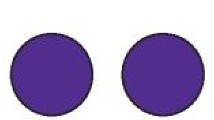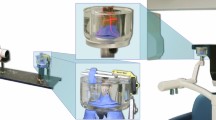Abstract
Data sources
PubMed, Web of Science, CINHAL and the Cochrane Library were searched until May 2016. Unpublished data were searched in Pro-Quest Dissertation, Abstracts and Thesis and Google Scholar, supplemented with manual search of the included studies references. No language restriction was used.
Study selection
All types of study designs were included, except case reports, comparing CBCT data with conventional radiographs. The primary outcome was: diagnostic accuracy between modalities, agreement in position, treatment planning and outcome efficacy. The secondary outcome was intermodality agreement in lateral root resorption detection and intra and inter-observer agreement values.
Data extraction and synthesis
Two reviewers independently selected the studies for inclusion, performed data extraction and evaluated risk of bias. Discrepancies were resolved by discussions and reaching consensus. The Newcastle-Ottawa Scale was used to assess the risk of bias for case-controlled and cohort studies and a modified version for cross-sectional studies. The Quality Assessment of Diagnostic Accuracy (QUADAS-2) tool was used to rate diagnostic accuracy studies.
Results
Eight studies met the inclusion criteria, two on diagnostic accuracy. The remaining six included 292 impacted canines in 224 patients. Outcomes were presented as calculated level of agreement and statistical significance for each primary outcome reported. Based on the diagnostic accuracy of two in vitro studies, the CBCT accuracy ranged from 50% to 95% while for conventional radiographs it ranged from 39% to 85%.
The other six studies reported inter-modalities agreement in localisation (six studies) and treatment planning agreement (three studies). The inter-modalities agreement varied from 0.20 to 0.82, with observed agreement of 64% to 84% in localisation of canine. The treatment planning agreement varied from 0.36 to 0.72.
Conclusions
The authors concluded that CBCT is more accurate than conventional radiographs in localising maxillary impacted canines and there is a broad range of inter-observer and modalities agreement for location and treatment planning. There is no robust evidence to support using CBCT as first line imaging method.
Similar content being viewed by others
Commentary
Considering that maxillary canines are the second most common impacted teeth, determining their exact location has an important role in orthodontic and surgical treatment planning. Adequate localisation may help avoid future complications including ankylosis, resorption of the adjacent teeth and formation of pathologic lesions.1 Also, it helps establish the prognosis and duration of the treatment.2
Traditionally, 2D radiographic images in different angulations (periapicals (PAs), occlusal, panoramic and lateral or posterior anterior cephalometric radiographs) have been used to localise these impacted teeth. Newer cone beam CT machines offering multiple customisable features together with the ability to manipulate the image in different views and the lack of superimposition provide an attractive option.
This systematic review and meta-analysis focused on the use of conventional radiography versus cone beam radiography for visualisation of the impacted maxillary canine. One of the limitations for evaluation of the impacted teeth is the absence of a gold standard for each imaging system.
The two studies that reported accuracy were in vitro. The risk of bias was assessed using the QUADAS-2 tool and the authors rated as having high bias risk for patient selection (both) and index test (one) while the rest of the categories were rated as low bias risk. The QUADAS-2 is a tool for quality assessment of clinical diagnostic accuracy studies so it is uncertain how it can be of use for in vitro studies. From those accuracy studies one compared CBCT to horizontal PAs and CBCT to panoramic together with occlusal views, the other compared CBCT against a panoramic plus two PAs and two occlusal views. Each study used different units and settings.
The modifications to the Newcastle-Ottawa scale add to the uncertainty of the authors' conclusions. This tool assesses risk of bias for observational studies but does not include cross-sectional studies, making the results difficult to understand and reproduce.
Since all the cross-sectional studies were done using seven different units using unique settings it very challenging to make any specific recommendations.
Most patients requiring the location of an impacted canine are children or young adults. Considering that the risk of radiation exposure to children or young adults is more than, and can be twice that of adults,3 careful consideration of the risk benefits should be done before acquiring any image.
Current advances in digital dental radiographs as well as progress with techniques in different types of small field CBCT scan helped drastically reduce the exposure. Still, in the majority of cases, a considerable number of conventional images, using different angulations, are obtained before creation of a treatment plan.
The effective dose of small field of view cone beam CT scans for children varies between 7-521 μSv and from 5-652 μSv for adults.4 However, the radiation exposure for a panoramic image varies between 2.7-24.3 μSv, a cephalometric image between 2-6 μSv and a full mouth series with rectangular collimation and CCD sensor is estimated 17 μSv.5, 6 Based on this important information a small field CBCT scan may provide the most benefits considering the radiation exposure compared to multiple conventional radiographs.
At the present time, small field CBCT scans are not readily available and when considering the cost to the patient, its use may be limited.
As stated in American Academy of Oral and Maxillofacial Radiology position statement regarding use of CBCT scan in orthodontic treatment, the use of CBCT scan should be based on the patient's history, clinical examination, previous radiographic imaging, and the presence of a clinical condition that the exposure to the radiation, especially in children or young adults, can be justified.7
To the main question of this review: considering the limited number of in vivo studies in accuracy of imaging systems and the lack of discussion of the treatment outcome, the answer remains unclear.
References
Pico CL, do Vale FJ, Caramelo FJ, Corte-Real A, Pereira SM . Comparative analysis of impacted upper canines: Panoramic radiograph Vs Cone Beam Computed Tomography. J Clin Exp Dent 2017; 9:e1176–82.
Lai CS, Suter VG, Katsaros C, Bornstein MM . Localization of impacted maxillary canines and root resorption of neighbouring teeth: a study assessing the diagnostic value of panoramic radiographs in two groups of observers. Eur J Orthod 2014; 36:450–456.
Smith-Bindman R, Lipson J, Marcus R, et al. Radiation dose associated with common computed tomography examinations and the associated lifetime attributable risk of cancer. Arch Intern Med 2009; 169:2078–2086.
Ludlow JB, Timothy R, Walker C, Hunter R, Benavides E, Samuelson DB, Scheske MJ . Effective dose of dental CBCT-a meta analysis of published data and additional data for nine CBCT units. Dentomaxillofac Radiol 2015; 44:20140197. doi:10.1259/dmfr.20140197.
White SC, Pharoah MJ . Oral Radiology: Principles and Interpretation. St. Louis, Mo: Mosby/Elsevier, 2013.
SEDENTEXCT Guideline Development Panel. Radiation protection No 172. Cone beam ct for dental and maxillofacial radiology. Evidence based guidelines. Luxembourg: European Commission Directorate-General for Energy; 2012.
American Academy of Oral and Maxillofacial Radiology. Clinical recommendations regarding use of cone beam computed tomography in orthodontics. [corrected]. Position statement by the American Academy of Oral and Maxillofacial Radiology. Oral Surg Oral Med Oral Path Oral Radiol 2013; 116:238–257. doi: 10.1016/j.oooo.2013.06.002
Author information
Authors and Affiliations
Additional information
Address for correspondence: International Dentistry Program, School of Dentistry, Loma Linda University, Loma Linda, CA, USA. E-mail: eeslami@llu.edu
Eslami E, Barkhordar H, Abramovitch K, Kim J, Masoud MI. Cone-beam computed tomography vs conventional radiography in visualization of maxillary impacted-canine localization: A systematic review of comparative studies. Am J Orthod Dentofacial Orthop 2017; 151: 248-258. doi:10.1016/j.ajodo.2016.07.018. Review. PubMed PMID: 28153153
This paper is based on a Cochrane Review published in the Cochrane Library 2013, issue 3 (see www.thecochranelibrary.com for information). Cochrane Reviews are regularly updated as new evidence emerges and in response to feedback, and the Cochrane Library should be consulted for the most recent version of the review.
Rights and permissions
About this article
Cite this article
Amintavakoli, N., Spivakovsky, S. Cone-beam computed tomography or conventional radiography for localising of maxillary impacted canines?. Evid Based Dent 19, 22–23 (2018). https://doi.org/10.1038/sj.ebd.6401291
Published:
Issue Date:
DOI: https://doi.org/10.1038/sj.ebd.6401291



